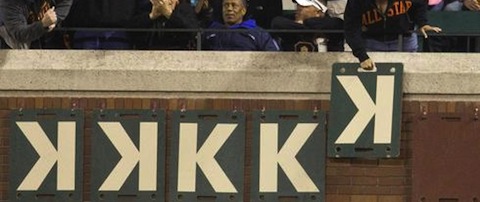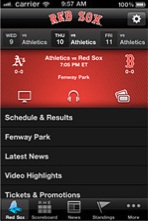Fans: The Final Frontier

Why.
I like to think that NotGraphs fills a niche for indirect, informal meditation on fandom. But what about that other niche, the niche for direct, formal meditation on fandom? Will no one plug its conspicuous emptiness?
Possibly anticipating my above lament, earlier this week Leon Neyfakh published a piece in the Boston Globe entitled “How Teams Take Over Your Mind.” This article discusses academic efforts to understand why people get attached to sports, efforts which so far have produced the theories that: a) it’s about the need for narrative, b) it’s tribalism, or c) it’s the opposite of tribalism.
Maybe not groundbreaking. But there are some interesting things in the article that I didn’t previously know:
ONE
RISD American Studies professor Daniel Cavicchi has an excellent blog called “The Ardent Audience” that you should visit upon completing today’s FanGraphs buffet.
TWO
There’s something called “CORFing,” which means “to cut off reflective failure.” There’s also something called “BIRGing,” which means “to bask in the reflective glow.” That’s what those acronyms mean. Don’t even waste your time thinking about what other things they could mean, because their meaning needs have already been filled. Really please just move along.
THREE
In 1999, two guys named George Milne and Mark McDonald developed a scale of fandom. Neyfakh describes Milne and McDonald as “fanologists.” “Fanology” does not have a Wikipedia page and is therefore at risk of not being an actual thing. However, a Google search for “fanology wiki” turns up the entry on “Flirting,” presumably on account of the following paragraph, which contains a lot of things that I didn’t previously know:
The fan was extensively used as a means of communication and therefore a way of flirting from the 16th century onwards in some European societies, especially England and Spain. A whole sign language was developed with the use of the fan, and even etiquette books and magazines were published. Charles Francis Badini created the Original Fanology or Ladies’ Conversation Fan which was published by William Cock in London in 1797. The use of the fan was not limited to women, as men also carried fans and learned how to convey messages with them. For instance, placing the fan near your heart meant “I love you”, while opening a fan wide meant “Wait for me”.








